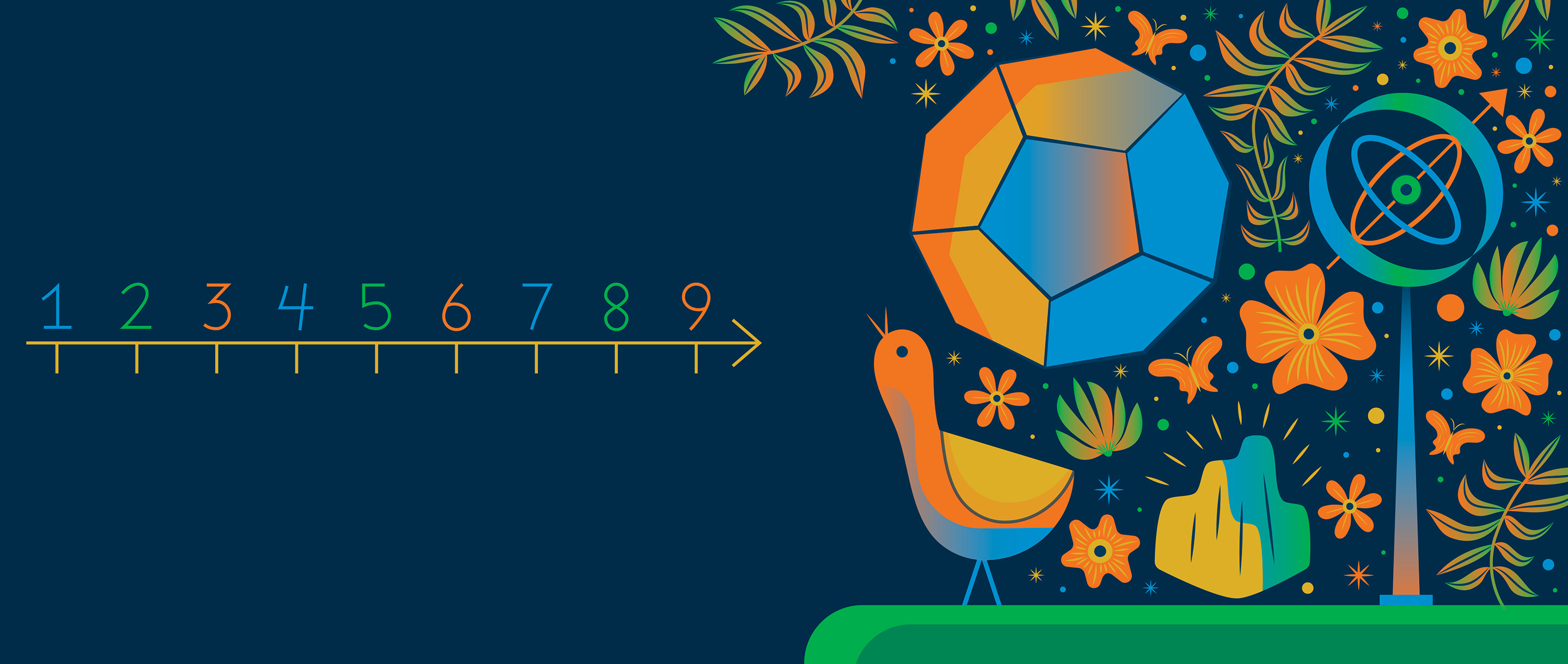The Two Forms of Mathematical Beauty

James O’Brien for Quanta Magazine
Introduction
A time-honored practice in mathematical circles is to divide the field in two. There’s the traditional “applied versus pure” argument, which mirrors the experimental-theoretical divide of other disciplines — the tension between advancing knowledge toward a specific end and doing it for its own sake. Or we can bisect mathematics in the same way that our brain is split, with an algebraic “left hemisphere” that thinks in logical sequences and a geometric “right hemisphere” that has a more visual approach. But the field also breaks down according to a more subtle distinction: one’s preference between two flavors of mathematical beauty.
It’s tough for nonexperts to see mathematics as beautiful in the first place. Beauty is in the eye of the beholder, sure, but it’s also hard to see when the work of art is hidden in darkness, obscured by an impenetrable cloud of symbols and jargon. Trying to appreciate mathematics without understanding its inner workings is like reading a description of Beethoven’s Fifth Symphony instead of hearing it.
Yet mathematicians have no qualms about earnestly describing their equations and proofs as beautiful. It’s a sense of aesthetics that has proved remarkably universal, existing across cultures and times: A Babylonian mathematician and a modern student could find equal delight in studying a perfect arrangement of lines in plane geometry, or in solving a quadratic equation.
And roughly speaking, mathematical beauty can come in one of two forms, generic or exceptional. I would go so far as to say that mathematicians themselves come in these two flavors, too — at least, they tend to gravitate to one of the two poles.
The first variant is an ethereal form of beauty, reflected in formal structures and patterns. It’s a sense of wonder at the inexorable order in which the mathematical world arranges itself. Just think of how perfectly the natural numbers line up in an infinite row. Or consider the sequence of Euclidean spaces of increasing dimensions: a line, a plane, a space, etc. Or the rigor and precision of formal logic itself. These structures are incredibly powerful and useful, and from a certain perspective that can indeed be beautiful.
But for those on the other side of the divide — which, it seems, includes most people and certainly most non-mathematicians — it’s tough to get truly excited by the concept of a vector space in n dimensions, or a continuous function on the real line. To appreciate these ideas is to appreciate a form of abstraction, and this sense of aesthetics often feels cold and formal. It’s the beauty of an ice queen, best admired from a safe distance, never up close.
The second form of mathematical beauty is more relatable. It concerns the exceptions to the rules, the objects that do not fit into any larger category. These are the curiosities, the one-offs, the mathematical incarnations of the enchanting fossils and strange minerals that filled natural history cabinets in the 17th and 18th centuries. This beauty has a very different feel to it: It’s exotic, quaint, intimate — and, of course, quite subjective.
Consider, for example, the dodecahedron, a favorite object in many mathematical cabinets of curiosities. It is the regular solid built out of 12 pentagons, and it’s one of the five perfectly symmetric solids. Its attraction was once described to me as being “complicated, but not too complicated.” The shape has a long history as a symbol of the esoteric that goes back to the ancient Greeks, when Plato suggested a connection between the five objects, now called the Platonic solids, and the physical universe. The dodecahedron symbolized all the heavenly bodies — the stars and planets, each perfect in shape and movement. Ever since, this mathematical form has signified the extraterrestrial, and it became a beloved symbol of alchemists and astrologists. From a modern mathematical perspective it is still considered exceptional, one of only a handful of symmetric objects that fully stand on their own and are not part of any larger pattern. For example, it is easy to generalize a cube or a tetrahedron to an analogous object in arbitrary dimensions, but there are no higher-dimensional analogues of the dodecahedron.
Another mathematical misfit, a prize possession for any cabinet, is simply known as the monster. It is the largest exceptional building block out of which all symmetry groups can be constructed, a mathematical monstrosity that can only be visualized in a space of no less than 196,883 dimensions. Depending on your taste, the monster group is either the prettiest or the ugliest object in all mathematics.
Both types of beauty have charmed mathematicians over the years and led to many advances. Abstraction is an obviously powerful tool. It allows one to deal with all members of a family at once, and it places problems in a wider perspective. The mathematician who follows the ice queen often dislikes concrete applications or specific cases — Alexander Grothendieck, one of the high priests of abstract algebra, once famously picked 57 as an example of a prime number. (It’s not.) The fascination with mathematical outcasts has been a productive strategy too. Such objects often live at the intersection of multiple ideas and can act as an access point between completely different worlds. Aficionados of this style don’t care for “abstract nonsense” and cherish the peculiarities of the concrete case, warts and all.
But the real world is very different from the idealized landscape of mathematics. Most sciences are tethered to the universe that describes the real world — but that’s just one out of an infinity of mathematical possibilities. As Jean-Pierre Serre reportedly quipped to his mathematician colleague Raoul Bott, “While the other sciences search for the rules that God has chosen for this Universe, we mathematicians search for the rules that even God has to obey.”
Confronted with this existential question — what laws does the universe actually follow? — it’s natural for most scientists to gravitate toward the relatable charms of the exceptional objects in the cabinet. But science has taught us that the abstract and austere form of mathematical beauty often offers a safer long-term choice.
A famous demonstration of this involves the appearance of the Platonic solids in the early work of the astronomer Johannes Kepler. He proposed a model of the solar system that based the distances between planetary orbits on a particular configuration of the five solids. It was a beautiful idea, but doomed. Kepler himself later rejected this model, after concluding that the orbits of the planets did not form the singular perfect shape of a circle, but instead had the ugly appearance of an ellipse, which can take one of a whole range of shapes. It seemed a definite step backward. He compared this discovery to a “wagon full of manure” left in the Augean stables of science.
But while Kepler was initially led astray by his preference for exceptional objects, Isaac Newton would go on to explain the planets’ elliptical orbits based on his universal theory of gravity. In fact, he showed how all motions in the heavens were versions of circles, ellipses, hyperbolas and parabolas. The beauty lay in Newton’s abstract laws, not the specific solutions.
This is a lesson that physicists, and scientists generally, have learned many times over. In the 19th century, scientists moved away from the random collections of curiosity cabinets to a more systematic study of the natural world. Biologists started to collect all specimens in a group of organisms, not just the most beautiful butterflies or birds, and discovered the general theory of evolution. Chemists classified all the elements, going beyond the easy bling of silver and gold, and uncovered the periodic table’s patterns in the process. Physicists then revealed the symmetries of elementary particles hidden within the elements’ atoms.
Every time, they discovered that the universe’s beauty lies in the abstract structures underlying physical phenomena. These structures may at first feel confusing and difficult to relate to, but taking the long view often proves much more powerful and meaningful. And, indeed, more beautiful.



